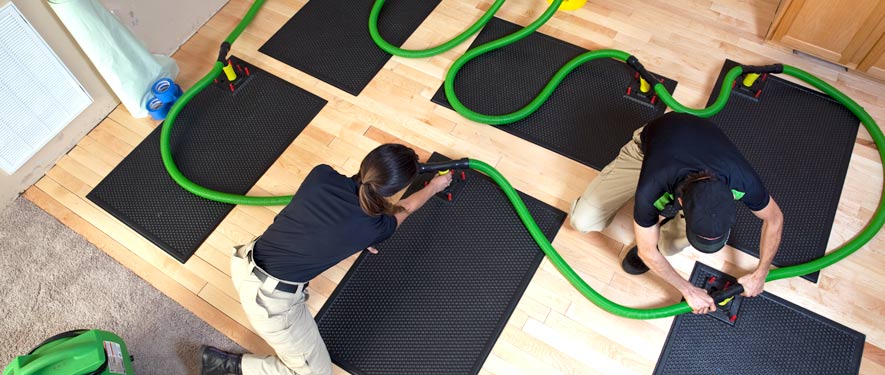
Step 4: Drying and Dehumidification
Our Water Damage Restoration Process
The manipulation of a building’s moisture levels in an effort to dry the structure is called psychrometry. SERVPRO of East Cobb’s team members are well trained in the field of psychrometry and have a great working knowledge and understanding of what it takes to dry-out both commercial and residential structures. Drying a building thoroughly and quickly as possible after water damage or flood is very important. If water damage is left unmitigated for even 24 hours, mold and mildew can start to form. Mold and mildew create a whole new set of problems, so fast action is paramount when it comes to mitigating a water loss.
Check out our blog post on “The Science Behind the Drying Process”!
Drying / Dehumidification
Our Professionals will use room measurements, temperature, and relative humidity to determine the optimal number of air movers and dehumidifiers to dry your home or business. We’ll carefully monitor the progress using moisture meters until the materials return to acceptable drying goals.
- Use Dehumidification Equipment
- Use Monitoring Equipment to Track Progress
Monitor Floor and Walls
We check the moisture levels to monitor the drying process.
- Monitor Floors
- Monitor Walls
Drying Equipment
- Industrial-grade dehumidifiers help prevent secondary water damage like swelling and warping of floors, walls, and furniture.
- High-speed air movers create airflow across walls, carpets, pads, and furniture, which accelerates the evaporation of moisture.






 24/7 Emergency Service
24/7 Emergency Service


